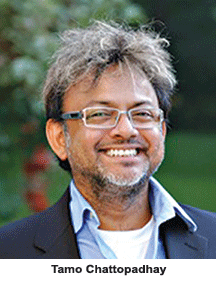BY ALL MEASURES, THE interaction between Indian school children and prime minister Narendra Modi on Teachers Day (September 5) was an unprecedented success. It was ‘first ever’ on many counts — but perhaps most importantly in its scope and format.
 Employing new media technologies in a live town-hall setting, an authentic, inspirational and at times humorous conversation unfolded between the leader of the world’s most populous democracy, and millions of children who will lead the nation in generations to come. Video feeds from classrooms and schools across the country were networked-in, and the event was telecast live.
Employing new media technologies in a live town-hall setting, an authentic, inspirational and at times humorous conversation unfolded between the leader of the world’s most populous democracy, and millions of children who will lead the nation in generations to come. Video feeds from classrooms and schools across the country were networked-in, and the event was telecast live.
However, a large group of children who would have certainly benefited from the caring and motivational words of the prime minister were left out of this national celebration viz, the country’s estimated 8.15 million out-of-school children. It is imperative to reaffirm our commitment to them as we approach Children’s Day celebrated on November 14.
A recent (2014) report — a collaboration between Unesco, Unicef and the Union human resource development (HRD) ministry released at the National University of Educational Planning and Administration (NUEPA) — indicates that out of an estimated 190 million 6-13 year-olds, approximately 8.15 million children (or 4.23 percent) are out of school today. The total number of out-of-school children would actually be much higher if one considered the full schooling cycle i.e. children up to 18 years of age. These are hard facts. Yet India can confront and overcome educational exclusion of its children only if it can realise the potential of the landmark Right to Free and Compulsory Education (RTE) Act, 2009.
Understanding who is out of school and why, is critical to delivering the promises of the RTE Act to India’s children. The good news is that we already know a great deal in this regard. In a compendium titled Who Goes to School? (Oxford University Press, 2011), the contributing authors presented brilliant analyses of the social, cultural, political and economic factors that keep children out of school. The Unesco/Unicef 2014 report reinforces these analyses. Disproportionally large numbers of children from traditionally vulnerable groups — girls, children in poverty, and from Muslim, scheduled caste and scheduled tribe communities — continue to remain out of school.
More fundamentally however, education research worldwide continues to indicate that children who are most vulnerable, are also most likely to be in schools least equipped to serve their learning needs. In other words, getting children into school per se is not a panacea if the schools are not places where they can grow and thrive with real learning — cognitive as well as affective.
Hence the focus of the campaign to get out-of-school children back into classrooms shouldn’t be ‘back to school’, but rather back to education and learning. And this raises the question of what’s the point of celebrating Teachers Day.
First, the capability of teachers is the touchstone of education quality. What teachers say and do with children in their classrooms, constitutes the core of teaching-learning. Hence a successful back-to-education campaign for out-of-school children cannot succeed without a robust national campaign preparing and supporting teachers in their everyday performance. While teachers cannot raise standards by themselves in the face of overwhelming social, cultural and economic impediments, a conscientious effort to improve their professional competency would go a very long way towards transforming the lives of their students.
Second, the symbolism of prime minister’s digital ‘town hall’ suggests a compelling need to re-imagine education and schooling in the globalised era in which knowledge is a mouse-click away and peers can be sitting countrywide in networked classrooms — much like the national town-hall that the prime minister projected on Teachers Day. But whether education happens inside a bricks and mortar classroom, or through a handheld mobile device, or a combination thereof, for every child, particularly those who are out of school today, the role of teachers is critical and indisputable.
Third, the celebration of Teachers Day also invites us to rethink who is or can be, a teacher. The prime minister himself suggested that working professionals such as doctors and engineers should be asked to teach once a week in schools in the interest of the country. Indeed, in a democracy, every conscientious citizen from any walk of life, can be a ‘citizen teacher’ who simultaneously educates and learns and strives to bring every out-of-school child back to education and learning.
Imagine if a majority of today’s out-of-school children in India celebrate November 14 in schools where teachers are sensitive to their particular learning needs, and adequately prepared to support them. What if, on Teachers Day next year, a restless 11-year-old — a former street child — were to Skype-in (using the school’s low-cost hand-held mobile computer developed by a leading science university of the country) and proudly tell the prime minister and children across the nation that he is in school today, and enjoying learning about the solar system.
That would be an incredible India!
(Dr. Tamo Chattopadhay is associate professor at the National University of Educational Planning and Administration (NUEPA), New Delhi)